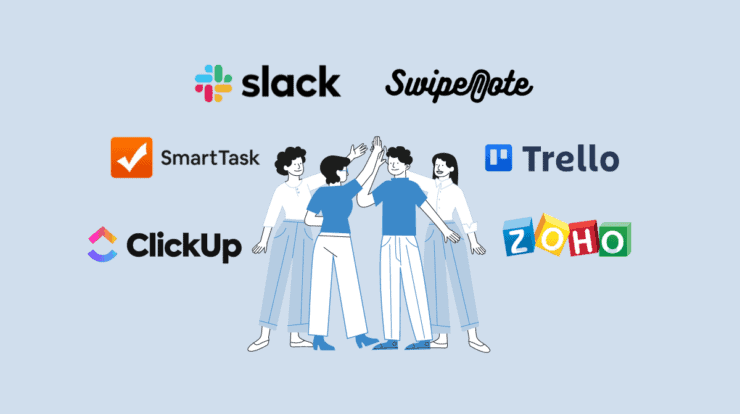
Virtually every business always involves some form of data entry processes, and with data increasingly becoming our most valuable assets, how effective and efficient our data entry process is can significantly affect our business’s chance of achieving success.
With that being said, many businesses opt to outsource their data entry processes to third-party professionals and service providers. This is why the data entry outsourcing services market is expected to grow by more than $350 million during 2019-2023.
Businesses can reduce up to 60% in data entry operation costs by outsourcing their data entry needs, while also potentially providing the business a more accurate data entry process with fewer errors. Yet, many businesses haven’t started outsourcing their data entry processes simply because they don’t know where to start.
By following the step-by-step guide below, you can easily move forward with outsourcing your data entry process to improve your business’s productivity and cost-efficiency.
Step 1: Assess Your Data Entry Process Needs
Every business is unique, and your business will have its unique data entry process news. So, before anything else, it’s very important to first thoroughly assess your business needs.
There are various approaches you can use to accomplish this, but in general, you should capture the details of the step-by-step data entry processes being carried out across various departments in your business. You can generally do so by manual observation and conducting surveys and interviews with employees/stakeholders involved in the data entry process.
Next, you should assess whether outsourcing this specific data entry process can help improve your efficiency and reduce your operating cost. Make sure that outsourcing the process will add value to your business, including in weighing future scalability.
Step 2: Identify Your Technical Requirements
Now that you’ve identified your needs, it’s time to break down the technical requirements you’ll need from a data entry service provider. You should consider the following factors:
- Budget: how much are you willing to pay for outsourcing your data entry process needs
- Volume: the volume of data that needs to be processed, and whether the data entry service provider can handle this volume.
- Technology: unique software or tools you might need to execute your data entry process. For example, OCR (Optical Character Recognition) software might be needed if you process a lot of handwritten documents
- Timeline: how fast do you want the data entry process accomplished
- Customer support: whether the data entry service provider offers 24/7 customer support, and whether they can support you in your preferred methods of communication
- Scalability: assess your requirements regarding future scalability, and figure out the required infrastructure and skills you are looking for
- Personalization: other unique needs your business may have regarding your data entry process, and whether your service provider is able to deliver these unique needs
Step 3: Contact Your Potential Vendors
Now that you’ve listed the technical requirements you may need from a third-party data entry service provider, you should be able to create a shortlist of your prospective outsourcing vendors.
Nowadays, it’s pretty easy to research your options online, and any good data entry service provider should have a professional website that also lists its previous projects and clients. Some high-quality data entry services offered by Oworkers, also give you the ability to get quick quotes for your exact needs, so you can quickly determine whether the service fits your budget.
Contact your candidates, and if possible, schedule one-to-one consultation with each of these prospective companies. Nowadays, you can also use various video conferencing platforms (i.e. Zoom) to conduct virtual meetings with these vendors.
Be transparent about your expectations, and thoroughly discuss your technical requirements. Use this chance to also learn about the vendor’s company culture and previous clients. Make sure they properly understand your needs, and on the other hand you should also try to understand all the details of what the partnership will entail.
Step 4: Plan The Transition
Once you’ve decided on a single vendor, it’s time to plan the transition from doing your data entry process in-house to outsourcing the process.
If you are working with an experienced vendor, then this shouldn’t be too much of an issue, as typically they are the ones providing you with a clear and comprehensive transition plan. However, make sure you understand the whole process clearly, and if necessary, ask what you will need to prepare on your end.
The goal of a smooth transition period is to minimize the interruption of your business process while reducing risks of data corruption/loss and security breaches. Also, plan how you are going to educate your team so they are ready for this transition.
Step 5: Set Up Monitoring and Evaluation System
Once the transition and integration stage has been performed successfully, the next step is to continue evaluating the performance of the third-party data entry service provider.
You can gather feedback from the stakeholders of the data entry process and data users, as well as other people in your team that might be impacted by the outsourced process. If there are any issues, don’t hesitate to bring them up to your service provider so they can make the necessary adjustment.
Conclusion
To ensure successful outsourcing of your data entry process, it’s crucial to first understand your data entry needs and technical requirements, so you can choose the right data entry vendor based on these technical requirements. This way, you can have the right expectations for your data entry service provider and can evaluate the data entry process accordingly.


